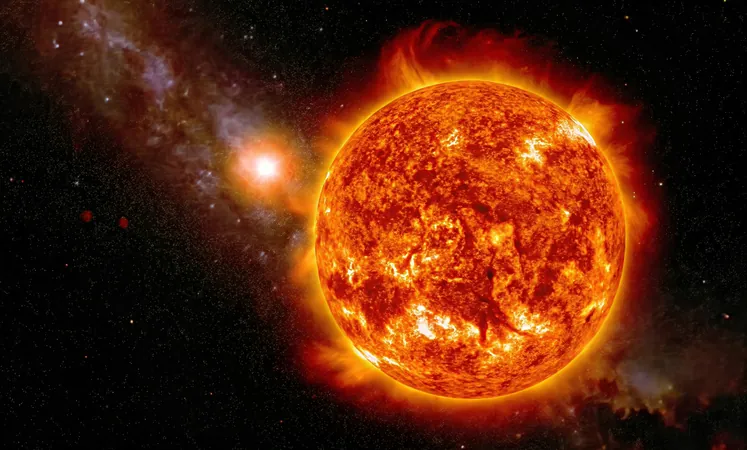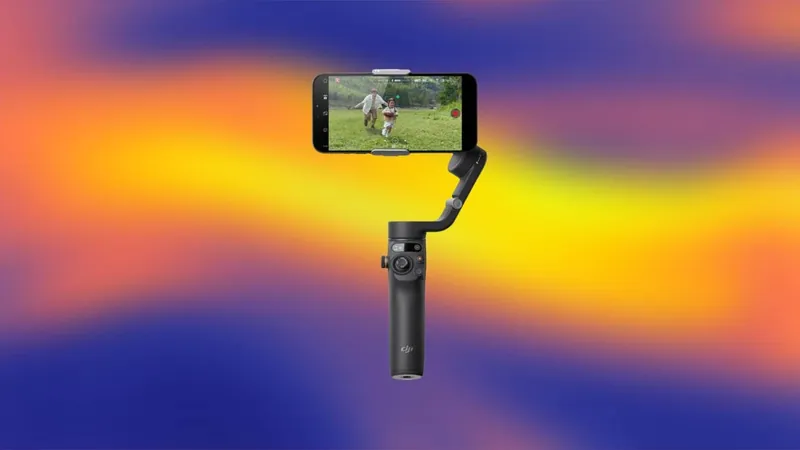
Trees Reveal Secrets of One of Earth's Most Intense Solar Storms
2024-11-21
Author: Mei
This year, dazzling displays of the Northern Lights have illuminated skies much farther south than usual, captivating social media users with stunning images of vibrant auroras. But what if we told you that there exists a cosmic event so powerful that it could immediately disable your smartphones and overwhelm electronics worldwide?
Extreme solar storms, indeed, are a rarity; in the last 14,500 years, only six of these events have left traces on our planet. The most recent occurrence dates back nearly 2,700 years to the time of the Assyrian Empire, in 664 B.C.
A Groundbreaking Discovery
A research team led by Irina Panyushkina from the University of Arizona's Laboratory for Tree-Ring Research and Timothy Jull from the Department of Geosciences has pinpointed the timing of the last known extreme solar storm. Their research, published in Communications Earth & Environment, identified a significant spike in carbon-14, a radioactive variant of carbon, which corresponds to this powerful cosmic event.
What Exactly Are Solar Storms?
Solar storms, also known as geomagnetic storms, occur when the Sun expels vast amounts of energy, often in the form of solar flares or coronal mass ejections (CMEs). These phenomena launch high-energy particles into space, which can interact with Earth’s magnetic field, resulting in spectacular displays like the Northern Lights, but also in disruptions to technological systems.
Tracing Solar Storms Through Tree Rings
According to Panyushkina, "After a few months, the carbon-14 produced from solar activity travels from the stratosphere to lower altitudes, where it gets absorbed by trees." The analysis of tree rings has allowed researchers to trace these ancient solar storms effectively. This groundbreaking technique is crucial as it helps scientists model and understand solar activity over millennia.
The Miyake Events
It wasn't until 2012 that scientists identified what are now referred to as Miyake events—extreme solar storms that leave their mark in the tree rings and ice cores of our planet. These storms occur when the Sun's electromagnetic field weakens, allowing more plasma to escape into space and collide with Earth's atmosphere, leading to spikes in radioactive isotopes.
Fusa Miyake, the physicist who analyzed these phenomena, revealed in his research that six Miyake events have occurred in the last 14,500 years. Panyushkina warns that if such events were to happen today, their impacts on global communications and technology could be devastating.
Cutting-Edge Methodologies
To uncover these ancient events, researchers employed surgical knives to extract tree rings from samples, some dating back centuries. By incinerating the cellulose, they determined the radiocarbon content. They also cross-referenced their findings with beryllium-10 spikes locked in glacier ice—another indicator of solar activity.
Can We Predict Future Solar Storms?
Despite the advances in understanding solar storm history through tree rings, researchers have yet to detect a pattern in their frequency. Panyushkina emphasized the challenge stating, "Tree rings tell us about the magnitude of these storms, but we haven’t found a predictable pattern, making future predictions unlikely."
However, their groundbreaking study will enhance our understanding of how these significant natural phenomena alter Earth's atmospheric chemistry and behavior.
The Implications for Our Electronics
As we delve into the mystery of these ancient solar storms, the lessons learned could have profound implications for safeguarding our technology in an age increasingly reliant on electronic devices. With the right knowledge, the next time the sky vibrates with a dazzling aurora, we could be better prepared for whatever cosmic wonders—and perils—lie ahead.
Stay tuned for more engaging scientific discoveries that redefine our understanding of the universe!





 Brasil (PT)
Brasil (PT)
 Canada (EN)
Canada (EN)
 Chile (ES)
Chile (ES)
 España (ES)
España (ES)
 France (FR)
France (FR)
 Hong Kong (EN)
Hong Kong (EN)
 Italia (IT)
Italia (IT)
 日本 (JA)
日本 (JA)
 Magyarország (HU)
Magyarország (HU)
 Norge (NO)
Norge (NO)
 Polska (PL)
Polska (PL)
 Schweiz (DE)
Schweiz (DE)
 Singapore (EN)
Singapore (EN)
 Sverige (SV)
Sverige (SV)
 Suomi (FI)
Suomi (FI)
 Türkiye (TR)
Türkiye (TR)